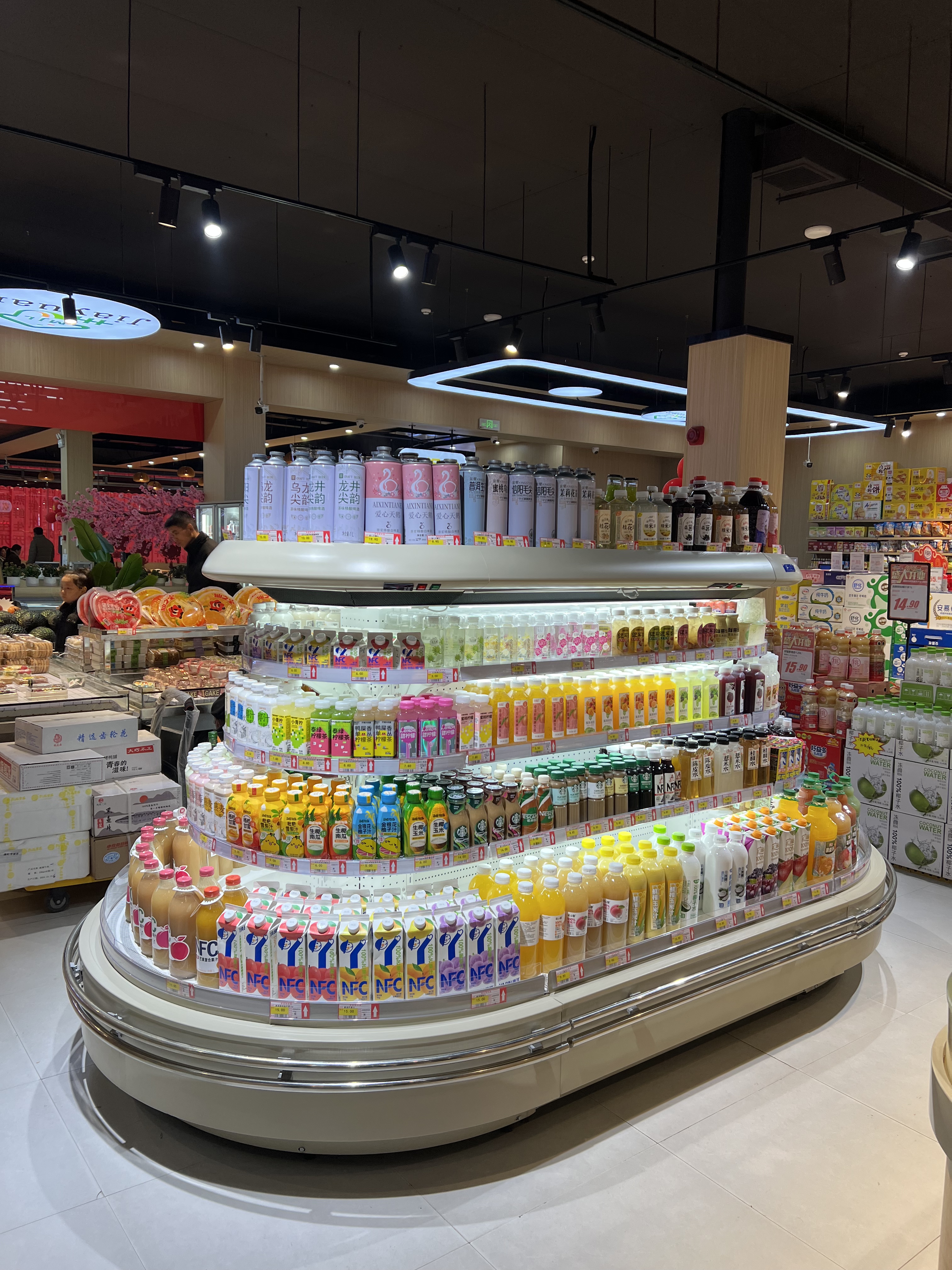In the modern retail industry, supermarket refrigerated displays have become a vital part of store design and food merchandising. These systems not only preserve product freshness but also influence customer buying behavior through visual presentation. For B2B buyers, including supermarket chains, equipment distributors, and refrigeration solution providers, selecting the right refrigerated display system means balancing performance, efficiency, and aesthetics.
Why Supermarket Refrigerated Displays Matter
Refrigerated display cabinets bridge the gap between cold storage and product presentation. Unlike traditional freezers, they are designed to showcase goods in an appealing and accessible way, helping stores increase sales while maintaining proper food safety standards.
Core Advantages of Refrigerated Display Systems
-
Product Freshness: Maintains consistent cooling for beverages, dairy, fruits, meat, and ready-to-eat meals.
-
Customer Attraction: Transparent design and LED lighting make products more visible and appealing.
-
Energy Efficiency: Uses modern compressors, eco-friendly refrigerants, and double-layer insulation to reduce energy consumption.
-
Space Optimization: Modular structures maximize floor efficiency and fit seamlessly into store layouts.
-
Brand Image Enhancement: A sleek and professional display reflects quality and modern retail standards.
Main Types of Supermarket Refrigerated Displays
Each store layout and product category requires different refrigeration display types. Here are the most common solutions for B2B buyers:
1. Open Multideck Chillers
-
Ideal for beverages, dairy, and pre-packaged foods.
-
Easy access encourages impulse purchases.
-
Air curtain design maintains temperature while saving energy.
2. Glass Door Upright Freezers
-
Best for frozen food, ice cream, and meat products.
-
Full-height glass doors enhance visibility and maintain low temperature.
-
Available in single, double, or multi-door options for different capacities.
3. Island Freezers
-
Commonly used in supermarkets and hypermarkets for frozen goods.
-
Large open-top design allows customers to browse easily.
-
Energy-saving glass lids improve temperature stability.
4. Serve-Over Counters
-
Designed for delicatessens, meat, seafood, or bakery sections.
-
Curved glass and interior lighting enhance product display and freshness.
-
Offers temperature precision and ergonomic access for staff.
5. Custom Refrigerated Display Units
-
Tailored for specific product lines or brand requirements.
-
Options include customized dimensions, branding panels, color schemes, and smart temperature control systems.
Key Considerations When Choosing a Supplier
When sourcing supermarket refrigerated displays, consider both technical performance and long-term operational value:
-
Temperature Range and Stability – Ensure accurate control for different food categories.
-
Compressor and Refrigerant Type – Prefer eco-friendly R290 or R404A systems for sustainability compliance.
-
Energy Efficiency Rating – Check for inverter technology and LED systems to reduce power costs.
-
Build Material and Finish – Stainless steel and tempered glass improve hygiene and durability.
-
After-Sales Support – Look for suppliers offering technical support, spare parts, and installation guidance.
Benefits for B2B Buyers
-
Reduced Operational Cost: Lower energy use and maintenance.
-
Improved Store Aesthetics: Modern, sleek equipment enhances shopping experience.
-
Flexible Customization: OEM/ODM options for supermarkets, distributors, and retail projects.
-
Reliable Performance: Long service life under continuous operation in demanding environments.
Summary
A high-quality supermarket refrigerated display is more than a cooling system—it’s a retail investment that combines freshness, energy savings, and brand presentation. For equipment manufacturers, distributors, and retail chain operators, partnering with a professional refrigeration solution provider ensures better efficiency, stronger sales impact, and long-term reliability. As sustainable and smart retail solutions become the new standard, investing in advanced refrigerated display technology is essential for staying ahead in the competitive market.
FAQ
Q1: What’s the difference between a refrigerated display and a traditional freezer?
A refrigerated display focuses on product presentation and accessibility, while a freezer is primarily for storage. Displays maintain visibility, temperature control, and customer engagement.
Q2: What products are best suited for supermarket refrigerated displays?
Ideal for dairy, beverages, fruits, seafood, meat, frozen food, and desserts—any product that needs both cooling and visibility.
Q3: Can refrigerated displays be customized for different store layouts?
Yes. Many manufacturers offer modular and custom-built designs that fit seamlessly into supermarkets, convenience stores, or retail chains.
Q4: How can I reduce energy consumption in refrigerated displays?
Use LED lighting, inverter compressors, and night blinds to minimize power usage while maintaining consistent cooling performance.
Post time: Nov-11-2025





